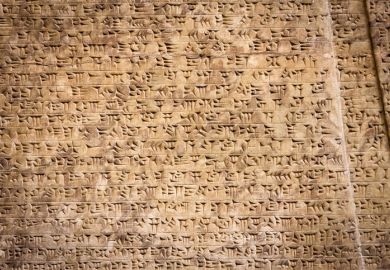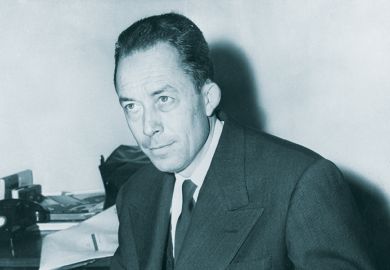I never read prefaces, and it is not much good writing things just for people to skip. I wonder other authors have never thought of this". The speaker is Oswald Bastable, hero-narrator of E. Nesbit's 1899 classic The Story of the Treasure Seekers , a 12-year-old littérateur whom Alasdair Gray's Book of Prefaces might have won over. Gray tells us that when he decided to build such a collection, back in the mid-1980s, he too wondered other authors had never thought of this.
Like that of the immortal Bastables, whose home-made world is make-believe concocted out of the best (and occasionally the worst) authors, Gray's book is a personal history of reading, and its marginal commentary and interstitial literary-historical essays are a record of his own thoughts and hobby-horses within the ample acreage of seven centuries and four countries. His own prefatorial and post-scriptorial contributions explain its genesis autobiographically: it is a monument to the literary education available to a working-class Clydeside boy in the 1930s and 1940s.
The very look of this volume has the indiscriminate charm of an exuberant cottage production. It has a fuchsia, black and gold dust-jacket, gold-stamped cloth binding and endpapers as well as full-page illustrations, marginal decorations and even portraits of his acknowledgees (all in Gill-like woodcuts). Moreover, it is gaudily set in bi-coloured type (black and red) and rarely, by my count, indulges in fewer than nine separate fonts per page. In other words, it is a very busy, jolly sort of book.
It is as if Oswald Bastable, self-taught connoisseur of literary extravagances, were greedily maintaining the trade and mystery of typographers. (Is Oswald to blame for the huge syllabic boo-boo on the jacket, which divides "preface" as "pref-ace"?) Gray provides a wittily versified (far from complete) errata slip, a pretty purple grosgrain bookmark, and writes or supplies all the blurbs ("'reverence the cheese-like brain that feeds you with these trifling jollities' - Urquhart of Cromarty"). The demotic feel of his literary history (William the Conqueror is "Boss William" and poets' dads and grandads are referred to like characters in The Archers ) can be distracting, but it seems to go with the visual register of the whole production.
All this para-textual architecture is lots of fun, but it also reminds us of one of the functions of the preface. What Gerard Genette referred to as his seuils (thresholds) into the penetralia of the literary edifice, Gray re-imagines for this shopkeeping nation as huckster's stalls before the gates of the temple, with wares spread out on purpose to waylay and entice. Prefaces direct attention, apologise for content, castigate other authors, suck up to potential and actual patrons, and beckon the reader into the greater work beyond.
If Oswald Bastable is inclined to skip the preface, it is with the same judgement as the modern shopper who declines to be drawn by a poorly arranged windowful of goods. One of the lessons of this volume is that great works are often engendered from baser motives than we like to remember, a primary one being want of cash. Gray's chosen prefaces are, for the most part, good shop windows for the works they hawk, at little risk of being unread and unbought.
Of the wares on display, I particularly fell for the gorgeous vigour of Anglo-Saxon and early middle English - the alliterative rhythms of the Gawain-poet (whose Troy was "brittened & brent to brondez & askez"), the plain attention seeking of Beowulf and The Dream of the Rood , which frankly commence with that most obvious of prefatorial injunctions, "Hwaet!" ("Yo!", "Oi!", or "Hey, there!"), as well as the world's own great preface, the Creation as chanted by Caedmon. At the far end of its chronology, the grave revolutionary cadences of Jefferson's Declaration of Independence introduce that radical experiment, America.
There are strange omissions and inclusions, which are not to be criticised if this is to be read as a literary desert-island selection, but which injure the collection's claim to synopsis. The Renaissance, for example, rich beyond reckoning in such exercises, is properly represented, but why does the extract from Robert Greene's Groatsworth of Wit elide its most famous passage? This is the one where the splenetic Greene snidely makes the first-ever reference to a playwright called Shakespeare, an "upstart crow" of little learning.
Philip Sidney's ludic exordium in A Defence of Poetry , surely the original of the "unaccustomed as I am" locution of after-dinner speeches, is also absent. Sidney begins what is perhaps the single most important document of the English literary renaissance with a story about his Viennese riding lessons with the master Pugliano (a high-glam anecdote from England's brightest young thing) which naughtily likens literary and equestrian accomplishment to monomania. Ben Jonson's acidulated "Induction on the Stage" at the beginning of Bartholomew Faire is so often cut by modern directors that it deserved a showing here (perhaps instead of or as well as the tamer Poetaster ), where its insulting of the audience that had recently failed to notice the brilliance of the author's previous solemn offering would sit well with all those other essays bewailing the sorry failures of literary taste in whichever reading public.
Disdain so thick it can be sliced with a bodkin is distinctive even in that boisterous age, and it was, after all, Jonson who said: "Language most shows a man: speak that I may see thee." The extract from Sir Thomas Browne's letter to the reader before Religio Medici cuts out just before its famous get-out clause, which instructs that anything controversial is to be read trope-ically and flexibly, as metaphor and not as truth. This is one of the most self-cancelling prefatorial postures I can think of, and characteristic both of the writer and his moment.
Gray is a relentlessly polemical Scottish nationalist, so England is "South Britain", the Authorised Version is "King Jamie's Bible" and James Dalrymple's The Institutions of the Law of Scotland - of, at best, antiquarian juridical interest, and not especially marvellous of style - gets in under this rubric (although why James Macpherson's Ossian collection is only described but not extracted is unclear); one would far rather enjoy a chunk of Samuel Johnson on the Western Isles. The four nations referred to in the title are England, Ireland, Scotland, and the United States. Wales is, presumably, a bit of England (Plaid Cymru, take note), and America is slenderly if impressively represented by only ten of the 170-plus prefaces.
Part of Gray's problem here is the bane of anthologisers everywhere: the 20th century is mostly out of bounds, to the everlasting shame of publishers who commonly insist on payment for copyright when they might waive their claim in the interest of the free publicity anthologies provide. Faber and Penguin and the rest will lose out, and it serves them right. Fortunately, Gray's choice sampling and window decoration light up his display, and since it cannot include Auden's prefaces, I think I will be refreshing myself with Beowulf instead.
Claire Preston is fellow in English, Sidney Sussex College, Cambridge.
The Book of Prefaces: History of Literate Thought by Great Writers of Four Nations (7th to the 20th Century)
Author - Alasdair Gray
ISBN - 0 7475 4443 3
Publisher - Bloomsbury
Price - £35.00
Pages - 640
Register to continue
Why register?
- Registration is free and only takes a moment
- Once registered, you can read 3 articles a month
- Sign up for our newsletter
Subscribe
Or subscribe for unlimited access to:
- Unlimited access to news, views, insights & reviews
- Digital editions
- Digital access to THE’s university and college rankings analysis
Already registered or a current subscriber? Login



